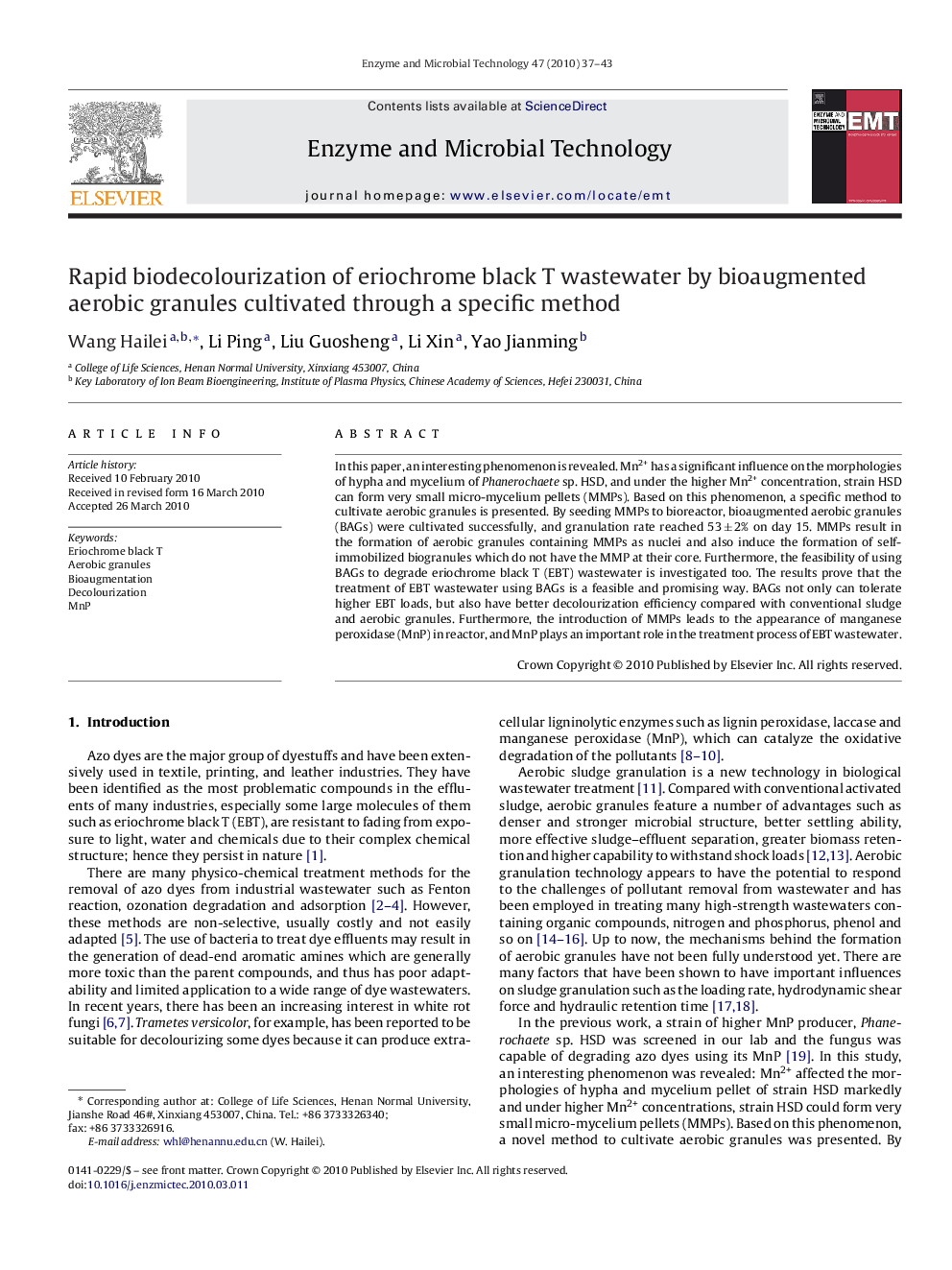| کد مقاله | کد نشریه | سال انتشار | مقاله انگلیسی | نسخه تمام متن |
|---|---|---|---|---|
| 17609 | 42683 | 2010 | 7 صفحه PDF | دانلود رایگان |

In this paper, an interesting phenomenon is revealed. Mn2+ has a significant influence on the morphologies of hypha and mycelium of Phanerochaete sp. HSD, and under the higher Mn2+ concentration, strain HSD can form very small micro-mycelium pellets (MMPs). Based on this phenomenon, a specific method to cultivate aerobic granules is presented. By seeding MMPs to bioreactor, bioaugmented aerobic granules (BAGs) were cultivated successfully, and granulation rate reached 53 ± 2% on day 15. MMPs result in the formation of aerobic granules containing MMPs as nuclei and also induce the formation of self-immobilized biogranules which do not have the MMP at their core. Furthermore, the feasibility of using BAGs to degrade eriochrome black T (EBT) wastewater is investigated too. The results prove that the treatment of EBT wastewater using BAGs is a feasible and promising way. BAGs not only can tolerate higher EBT loads, but also have better decolourization efficiency compared with conventional sludge and aerobic granules. Furthermore, the introduction of MMPs leads to the appearance of manganese peroxidase (MnP) in reactor, and MnP plays an important role in the treatment process of EBT wastewater.
Journal: Enzyme and Microbial Technology - Volume 47, Issues 1–2, 5 July 2010, Pages 37–43